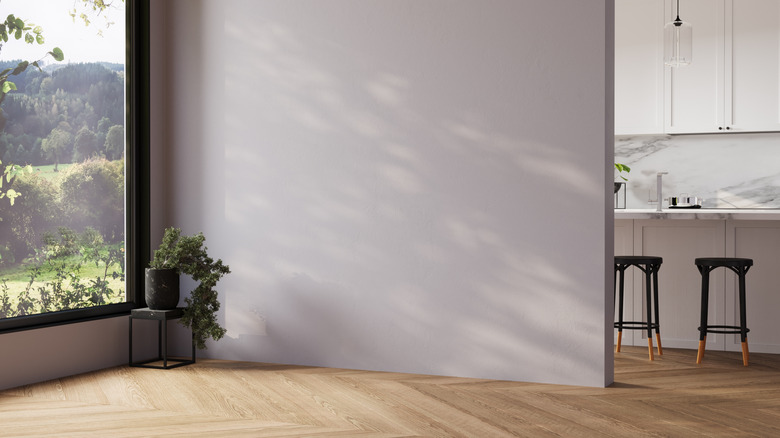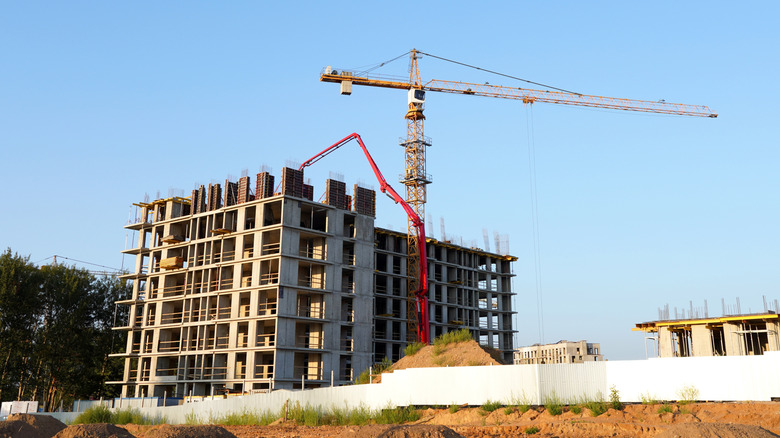How This Revolutionary New Concrete Can Store Clean Energy (And What It Can Be Used For)
November 22, 2025
Concrete is everywhere. It’s the second most used material in the world after water, and can be found in buildings and infrastructure in every corner of the globe. Scientists at Aarhus University in Denmark recently published a study that could reshape the way that we think about concrete, having pioneered a method to turn the material into a means of energy storage using microbes. The research, which was published in Cell Reports Physical Science, mixed Shewanella oneidensis bacteria into concrete to create a biohybrid material that can store electricity.
The bacteria build biofilms inside the concrete that store the electricity, turning each cement block into a supercapacitor. The blocks function similarly to a battery, storing energy until it is needed. However, unlike a battery, the bacteria-infused concrete has the ability to regenerate its storage capacity. Rather than irreversibly degrading over time like the current generation of batteries do, researchers found that injecting the new concrete with nutrients allows the bacteria to regain up to 80% of its storage abilities.
In an Aarhus University press release, Qi Luo, one of the authors of the study, said the researchers “envision this technology being integrated into real buildings, in walls, foundations, or bridges, where it can support renewable energy sources like solar panels by providing local energy storage.” Homeowners with solar panels currently have to install a home battery to store charge, but with the new concrete, some of the storage capacity could potentially come from the concrete used in the home’s construction.
Could the walls of the future store energy?
The new concrete created by the researchers has a high amount of energy storage capacity. Luo explained, “Imagine a regular room built with bacteria-infused cement: even at a modest energy density of 5 Wh/kg, the walls alone could store about 10 kWh — enough to keep a standard enterprise server running for a whole day.”
As well as being impressively capacious, the material also held up well over extended use. According to the study, the material was able to retain 85% of its original capacity after 10,000 charging and discharging cycles. For context, the average lithium-ion power tool battery will last anywhere between 300 and 2,400 cycles before it significantly drops in capacity.
The concrete remained able to store electricity across a wide variety of temperatures, although its capacity dropped in freezing conditions. The research found that the electricity-storing microbes were most active at temperatures between 30 to 37 degrees Celsius (86 to 99 degrees Fahrenheit), and they could reach around 80 degrees Celsius (176 degrees Fahrenheit) before breaking down and permanently losing capacity. Even after the microbes died, the energy-storing films they built in the concrete continued to be able to hold a notable amount of charge.
There are still limitations to the new material
Despite the new concrete showing plenty of promise in the study, it won’t be entering commercial use anytime soon. The authors of the study acknowledged that they didn’t yet know how the microbes behaved over the long-term, and further work also needs to be carried out on how the microbes survive with only minimal maintenance. At the moment, researchers also haven’t confirmed whether scaling up the production of the bacteria to the level that would be needed for commercial use would be feasible.
Certain environmental conditions, such as the alkalinity of the microbes’ surroundings, also significantly altered their storage abilities. Furthermore, if the concrete was to be used in particularly hot environments, there would need to be some way to shield the microbes from the effects of the heat. So, while the new concrete is a potentially revolutionary battery technology if it does turn out to be commercially viable, there’s no guarantee it will ever make it into the hands of construction companies. However, it remains a very promising idea, despite its current limitations.
Search
RECENT PRESS RELEASES
Related Post
 iamsuleyman/Shutterstock
iamsuleyman/Shutterstock Maksim Safaniuk/Shutterstock
Maksim Safaniuk/Shutterstock

